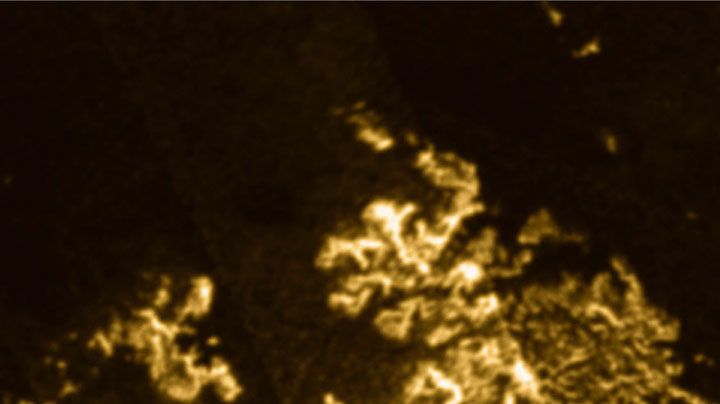TORONTO – Astronomers have discovered a bright geological object on the surface of Saturn’s largest moon, Titan.

The object was discovered after astronomers from Cornell University examined data captured by the Cassini mission and processed by scientists at NASA’s Jet Propulsion Laboratory. Cassini has been in orbit around Titan since 2004, gathering data about the giant planet and its moons. Titan, Saturn’s largest moon, has intrigued astronomers for centuries.
READ MORE: Cassini spacecraft may have witnessed birth of Saturn moon
Titan is very much like Earth, with weather systems, lakes, seas and even rain. However, this isn’t a place you’d like to visit: the atmosphere is comprised of hydrogen and methane, which is more like gasoline.
On July 10, 2013, Cassini sent back radar images of Ligeia Mare, the second-largest sea on Titan. When astronomers compared the new images with the older ones, they found that before July 2013, that region was devoid of features, including waves.
The research was published in the June 22 edition of the journal Nature Geoscience.
But the new image suggested that there are complicated geological processes in Titan’s northern hemisphere.
“This discovery tells us that the liquids in Titan’s northern hemisphere are not simply stagnant and unchanging, but rather that changes do occur,” said Jason Hofgartner, a Cornell University graduate student in the field of planetary sciences, and the paper’s lead author. “We don’t know precisely what caused this ‘magic island’ to appear, but we’d like to study it further.”
READ MORE: Sub-surface ocean confirmed on Saturn moon
In trying to determine what created the “magic island,” as the astronomers are calling it, researchers theorize that northern hemispheric winds may be forming waves in the sea and the radar images are simply the ghost images of those waves, or that gases may be pushing out of the sea floor, rising as bubbles.
Other theories include: solids that have sunk to the bottom of the sea during a winter-like freeze are rising to the surface when the temperatures get warmer, or that the sea has suspended solids which act like silt in an earthy delta.
In 2005, the European Space Agency’s Huygens probe – part of the Cassini Huygens mission to Saturn – landed on the surface of Titan.





Comments